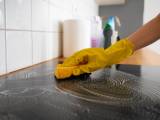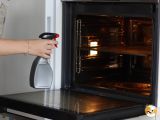Your cutting board: A nest of bacteria? Know when to change it!

The chopping board is an essential utensil in any kitchen, but it often doesn't get enough attention when it comes to cleaning and periodic replacement. Knowing when to replace your chopping board is crucial to ensuring food safety and avoiding cross-contamination. In this article, we'll look at the signs of wear, the importance of hygiene and the ideal frequency for replacement.
1. The importance of changing the cutting board regularly
Cutting boards are constantly exposed to raw and cooked food, becoming surfaces prone to the accumulation of bacteria such as Salmonella, E. coli and Listeria, which can cause food poisoning. Cracks and crevices in cutting boards are places where micro-organisms can lodge, even with regular cleaning. Therefore, knowing when to replace this utensil is a safety factor.
2. Types of cutting boards and their characteristics
Before deciding when to change the board, it's useful to know the different types available:
- Wooden boards: These are durable and have natural antibacterial properties. However, they are more prone to cracking if not looked after properly and need to be treated with mineral oil regularly.
- Plastic boards: These boards are easier to clean and can be washed in the dishwasher. However, they scratch easily, which can create cracks where bacteria can accumulate.
- Bamboo boards: These are more resistant to water absorption and therefore less prone to cracks and mold, but they also need care to prevent wear and tear.
- Glass and ceramic boards: Durable and easy to clean, but very hard on knives, which makes them less recommended for frequent use.
Each material has a different durability, and the type of use should guide the choice and replacement time.
3. Signs that it's time to change the board
Some clear signs indicate that your board is no longer safe for use:
- Deep scratches and cracks: These marks are common, especially on plastic and wooden boards. Once they become deep, they are almost impossible to sanitize completely.
- Permanent stains: Stains that don't come off with cleaning may indicate that the board has absorbed residue, which facilitates the proliferation of bacteria.
- Unpleasant smell: Persistent smells of garlic, onions or raw meat, even after cleaning, are signs that the board may be contaminated internally.
- Excessive wear and tear: Boards that have become too thin or deformed due to constant use and washing lose their efficiency and need to be replaced.
4. Factors influencing the frequency of change
The frequency of cutting board replacement depends on a number of factors:
- Intensity of use: In domestic kitchens, replacement may be necessary every 1-2 years, depending on the intensity of use and the type of food. In professional kitchens, where use is continuous, replacement can occur up to every three months.
- Care and maintenance: Boards that are well looked after - sanitized after each use and stored in a dry place - tend to last longer. Wooden boards, for example, last longer if they are regularly treated with mineral oil.
5. How to extend the life of your chopping board
Some cleaning and maintenance practices help to extend the life of cutting boards:
- Proper cleaning: Wash the board with hot, soapy water immediately after use and dry immediately to prevent the material from absorbing moisture. Plastic boards can be washed in the dishwasher, while wooden boards should be washed by hand.
- Regular disinfection: For plastic boards, use a solution of bleach and water to disinfect periodically. For wooden boards, rub with a mixture of coarse salt and lemon juice or white vinegar.
- Correct storage: Store the board in a dry, ventilated place, avoiding prolonged contact with moisture, especially wooden boards.
- Separate food types: Use different boards for raw food, vegetables and cooked food. This reduces cross-contamination and helps preserve the material.
6. When should I really change my board?
The cutting board should be replaced when it shows visible signs of wear or when, even after a good clean, it still has stains or odors. As a general rule:
- Plastic boards: Change every 6-12 months if there are deep cuts.
- Wooden boards: Replace every 1-3 years, depending on maintenance.
- Bamboo boards: With proper maintenance, they can last up to 2-3 years.
- Glass and ceramic boards: Hardly ever wear out, but if they do, replace them to avoid accidents.
The chopping board is an indispensable tool in the kitchen, but changing it regularly is essential for the safety and health of users. Look out for signs of wear and choose materials that suit your type of use and care routine. With good maintenance and timely replacement, you can guarantee a safer kitchen, free from unwanted contamination.
Read more
 Mirella Mendonça
Mirella Mendonça

Comments